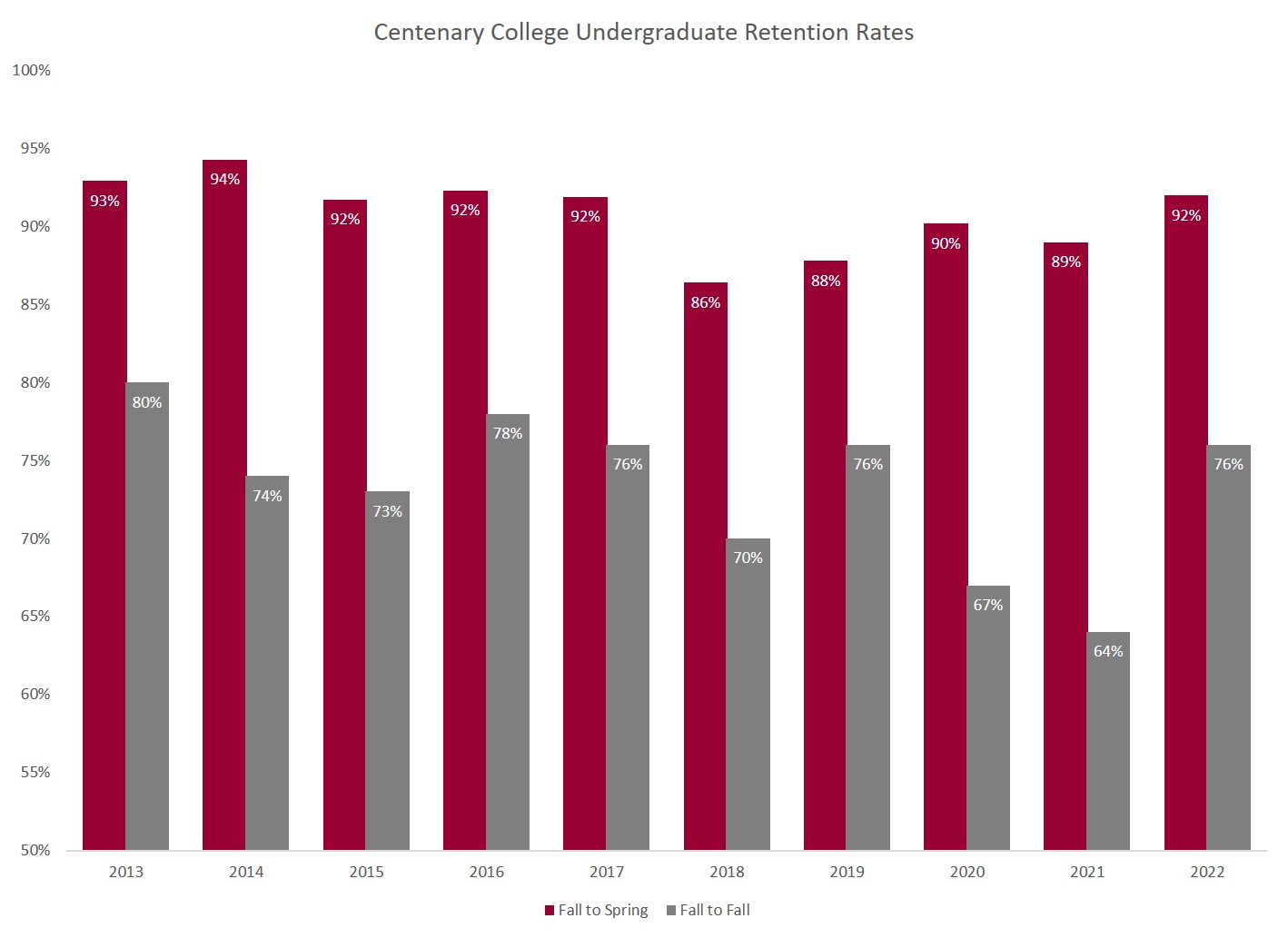Centenary College evaluates success with respect to student achievement consistent with its mission. Among the indicators of success pertaining to student achievement used by the College are retention rates, graduation rates, and course completion rates.
Goal 1: Centenary freshmen will retain and graduate from Centenary. (Outcome: Retention Rates & Graduation Rates)
Goal 2: Centenary students will satisfactorily complete attempted course work. (Outcome: Course completion rates)
Goal 3: Centenary students will graduate in a timely manner. (Outcome: Time to Degree Completion)
Undergraduate
Retention Rates
Centenary monitors year-to-year retention rates for each first-time entering cohort. Retention goals are proposed and monitored by a cross-divisional team, the Enrollment Policy Committee. Current first to second year retention goals are:
- Fall 2023 cohort (returning Fall 2024): 75%
- Fall 2024 cohort (returning Fall 2025): 75%
- Fall 2025 cohort (returning Fall 2026): 76%

Graduation Rates
Centenary also monitors graduation rates for each cohort. Graduation goals are also proposed and monitored by the Enrollment Policy Committee. The graduation rate is based on a 150% of the expected time to graduate, i.e., approximately six years. Current goals are:
- Fall 2019 cohort (graduating Spring 2024 or sooner): 60%
- Fall 2020 cohort (graduating Spring 2025 or sooner): 60%
- Fall 2021 cohort (graduating Spring 2026 or sooner): 61%

Graduate
Master of Business Administration
Course Completion Rates
Centenary monitors course completion rates for MBA graduate students. Goals are proposed and monitored by a cross-divisional team, the Enrollment Policy Committee. As a measure of successful academic progress, current course completion rate goals are:
- AY 2023-24: 95%
- AY 2024-25: 95%
- AY 2025-26: 96%
Time to degree completion
Centenary monitors time to degree completion for MBA graduate students. Goals are proposed and monitored by a cross-divisional team, the Enrollment Policy Committee. As a measure of student achievement, the median time to degree completion goals are as follows:
- Academic Year 2023-2024 graduates: 1.5 years
- Academic Year 2024-2025 graduates: 1.5 years
- Academic Year 2025-2026 graduates: 1.25 years
Master of Arts in Teaching
Course Completion Rates
Centenary monitors course completion rates for MAT graduate students. Goals are proposed and monitored by a cross-divisional team, the Enrollment Policy Committee. As a measure of successful academic progress, current course completion rate goals are:
- AY 2023-24: 98%
- AY 2024-25: 98%
- AY 2025-26: 98%

Time to Degree Completion
Centenary monitors time to degree completion for MAT graduate students. Goals are proposed and monitored by a cross-divisional team, the Enrollment Policy Committee. As a measure of student achievement, time to degree completion goals:
- Academic Year 2023-2024 graduates: 2.4 years
- Academic Year 2024-2025 graduates: 2.2 years
- Academic Year 2025-2026 graduates: 2.0 years
The data below is dis-aggregated by degree.






